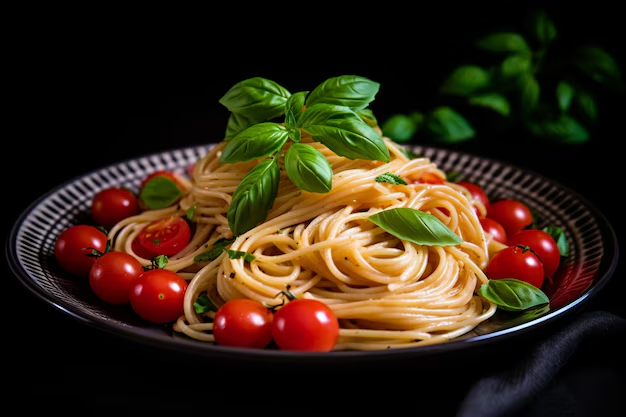Fettuccine, a beloved pasta variety, holds a special place in culinary traditions worldwide for its versatility, texture, and ability to complement a wide range of sauces and ingredients. This article explores the origins, characteristics, culinary uses, and cultural significance of fettuccine, highlighting its enduring popularity in the realm of Italian cuisine and beyond.
Origins and Evolution:
Fettuccine, derived from the Italian word “fettuccia” meaning “little ribbons,” belongs to the family of long, flat pasta noodles. It originated in central Italy, particularly in the regions of Emilia-Romagna and Tuscany, where pasta-making has deep historical roots. Traditionally, fettuccine was hand-rolled and cut to resemble ribbons, making it a labor-intensive yet cherished pasta variety.
Characteristics and Preparation:
Fettuccine is characterized by its flat shape, similar to tagliatelle but wider in width, typically around 6-8 millimeters. It is made from durum wheat flour and water, giving it a firm texture that holds sauces exceptionally well. The pasta dough is rolled thin, then cut into long, rectangular strips, resulting in noodles that are hearty and satisfying to eat.
Culinary Uses and Pairings:
Fettuccine’s versatility makes it a favorite choice for various pasta dishes. It pairs famously with creamy sauces such as Alfredo, where its broad surface area absorbs the rich flavors. It also complements robust tomato-based sauces, seafood, and vegetables, offering endless possibilities for culinary creativity. Classic dishes like Fettuccine Alfredo, Fettuccine Bolognese, and Fettuccine Carbonara highlight its adaptability and appeal in both home kitchens and gourmet restaurants.
Regional Variations and Cultural Significance:
In Italy, different regions have their own variations of fettuccine dishes, each showcasing local ingredients and culinary traditions. For instance:
Fettuccine allay Romana: Served with a hearty meat raga in Rome.
Fettuccine al Tartuffe: Tossed with luxurious truffle sauce in central Italy.
Fettuccine aid Frutti di Mare: Featuring seafood and fresh herbs in coastal regions.
Beyond Italy, fettuccine has been embraced globally, adapted to local tastes and ingredients while retaining its fundamental appeal as a comforting and satisfying pasta choice.
Nutritional Profile and Health Benefits:
Fettuccine, like other pasta varieties, provides essential carbohydrates for energy and is a source of dietary fiber when made from whole wheat flour. Its moderate calorie content and versatility in pairing with nutritious ingredients make it a balanced choice in a well-rounded diet when consumed in moderation.
Culinary Techniques and Preparation Tips:
Cooking fettuccine involves boiling in salted water until al dente, a term meaning firm to the bite. This ensures the pasta retains its texture and enhances its ability to absorb sauces. Pairing fettuccine with complementary ingredients such as fresh herbs, cheeses, and proteins enhances its flavor profile and elevates the dining experience.
Popularity and Contemporary Appeal:
In contemporary cuisine, fettuccine continues to be celebrated for its comforting texture and ability to star in both simple weekday meals and elaborate gourmet presentations. Its presence on restaurant menus and in home kitchens worldwide underscores its enduring popularity and timeless appeal.
Conclusion:
Fettuccine, with its origins rooted in Italian culinary traditions, has evolved into a globally beloved pasta variety known for its versatility and satisfying texture. Whether enjoyed with creamy sauces, robust meats, seafood, or fresh vegetables, fettuccine remains a staple that brings people together over shared meals and culinary experiences. Its enduring popularity and ability to adapt to diverse culinary preferences highlight its significance in the world of pasta and its cherished place on dining tables around the globe.
